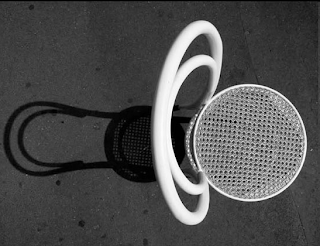"Never was a better and more elegant design and a more precisely crafted and practical item created.”
Le Corbusier
 |
|
Photo by Roberto Basile (Milan), a winning entry in Thonet's 2009 Photo competition 214x214: A Chair the World Over, which marked the 150th birthday of this chair.
|
In his book At Home: A Short
History of Private Life, Bill Bryson writes entertainingly about
Morris’ experience as a 17 year old, attending the 1851 World’s Fair at Crystal
Palace…where he was so disgusted by what he saw that he ran outside and vomited
in the bushes.
One bright spot in the haze of all this is Michael Thonet, the creator of
Chair No.14 (now known as No. 214). Thonet (1796-1871) was a German cabinet
maker who developed the process of using steam to bend wood. The resulting
bentwood designs had a simple aesthetic (refreshing in the sea of heavy,
ornately carved furniture of the day) that were lightweight, practical and
inexpensive to produce. Designed in 1859, Chair No. 14 has been in continuous
production ever since.
Picasso had a Thonet rocking chair in his studio. Le Corbusier, the Modernist architect, designer and urban planner, was also a fan. Despite the iconic pieces that are attributed to Le Corbusier, he wasn't very interested in designing his own furniture (perhaps the subject of a future post), preferring to furnish his interiors with simple pieces by other designers, such as Thonet's No. 14.
With more than 50 million of these versatile chairs having been made to
date, it is considered to be the most successful industrial product in the
world.
 |
|
Six easy
pieces: the first industrial product to ship pre-assembled.
|
 |
| Thonet's bentwood chair continues to be a popular part of the decorating mix. |
 |
| A variation of No.14 with a contemporary colour treatment. (photo by Jason Loucas) |
Today, Chair No. 214 continues to be manufactured by Thonet’s
eponymous company, and is available in Toronto through Design Within Reach
(www.dwr.com). I highly recommend Bryson’s book (for a taste, download his podcasts
at http://itunes.apple.com/ca/podcast/the-bill-bryson-podcast/id403477844).
References:
http://www.remodelista.com/posts/paints-palette-yellow













